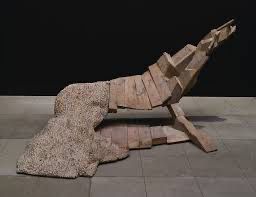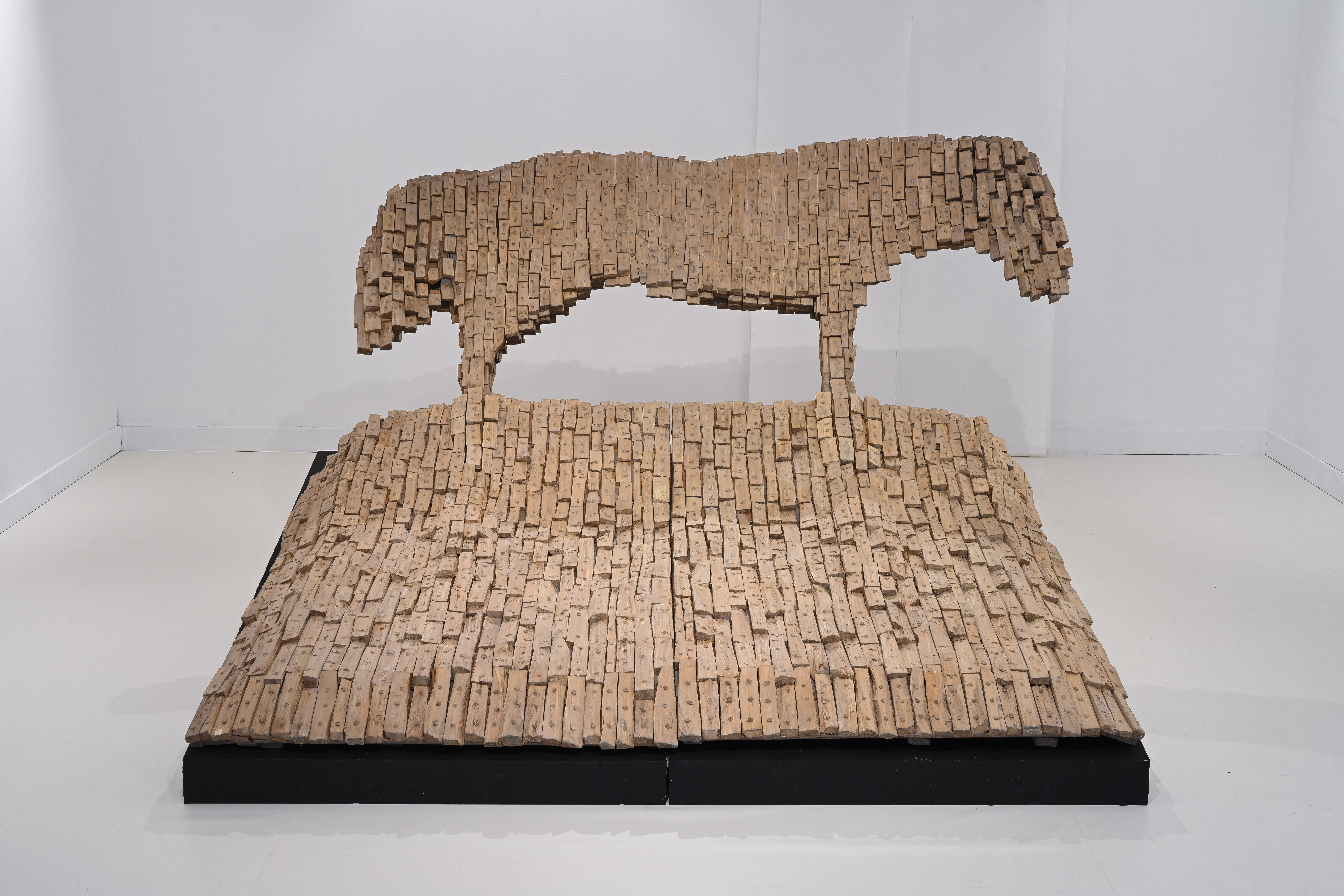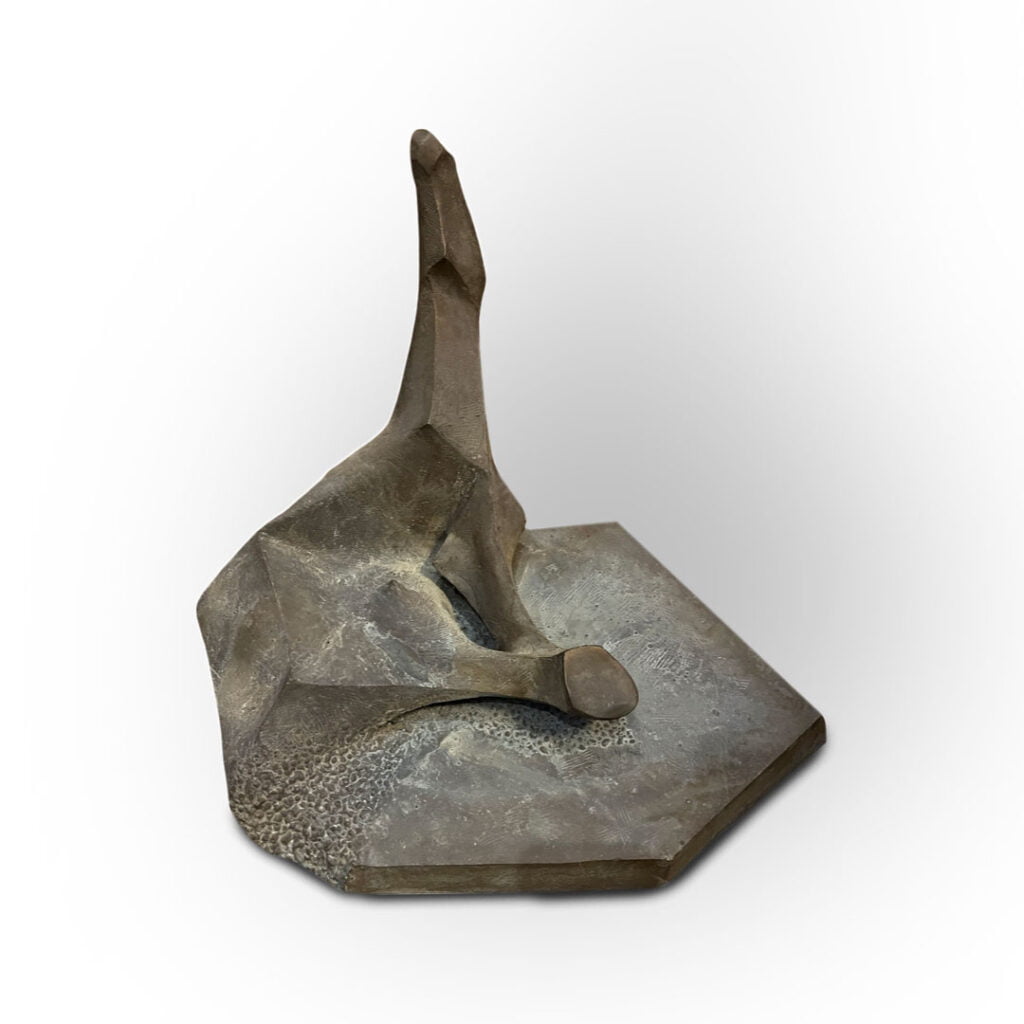- Exposure
- Works
- Exposition 20.WTS
- Marriot Exposition
- About the exhibition
- Footage
- Curatorial statement
- Antoni Janusz Pastwa
- Catalog
- For the media


Exhibition:
Form speaks
Antoni Janusz Pastwa
24.11.2023 – 26.11.2023
20th Warsaw Art Fair
27.11.2023 – 15.03.2024
Warsaw Marriott Hotel
Curator of the exhibition: Wieslawa Widerinska
Organizers:


Works
“For me, the measure of Janusz Pastwa’s creative mastery is his talent for using a chisel – also the conventional one – on the border of what is marked and unmarked, added and cut off in mid-word, half-thought; the ability to take sculpture from the space of still life to the sphere of spirituality, where convention means life, experience, feeling.”
~Waldemar Dąbrowski, Director of the Grand Theater – National Opera
Marriott Exposition
During the exhibition „Form speaks”, you can see sculptures treated in a very original way, with my way of sculpting and thinking about form. I express myself through form, believing that there is still a lot to be said in there and that it will never be possible to say everything
~ Antoni Janusz Pastwa
About the exhibition Form speaks

Iwona Staroszczyk
Limited Edition Gallery
I met Professor Antoni Janusz Pastwa on the occasion of the exhibition of his works “Animals and People. Shared Sunshine, Shared Rain” at the Museum of Literature in Warsaw in 2019. We were already having the first tentative discussions about our potential cooperation. Unfortunately, the timing of the pandemic thwarted the plans.
When life returned to normal, the Professor made his presence known again with a high-profile exhibition at the Opera Gallery of the Grand Theater – National Opera in 2022. It was one of those exhibitions that are deeply memorable. At that time, our next meeting was arranged by a mutual friend, Waldemar Górnicki. He believed that something special would be born from this tandem.
For a very long time I wondered what I could do for this class of sculptor to go beyond merely warming myself in His splendor? Antoni Janusz Pastwa is the co-author of the Apollo Quadriga on the front of the Grand Theater – National Opera and many other well-known sculptural realizations, and is the recipient of many awards and honors, including a two-time winner of the Norwid Prize (2002 and 2018) and a recipient of the Gold Medal “Meritorious to Culture Gloria Artis” (2019). He has had exhibitions and has works in the collections of major art and cultural institutions in Poland and abroad. He is a member of the Program Council of the Polish Sculpture Center in Oronsko and has nurtured many outstanding sculptors.
At the same time, Professor Pastwa is a remarkably humble person. He never cared for the fame and honor so much due him. Hence the idea of doing an exhibition to accompany the 20th anniversary of the Warsaw Art Fair was born. This significant anniversary of Poland’s key fair, which is visited annually by 10,000 people: collectors, art lovers and art dealers, is a good excuse to broadly showcase the work of a sculptor considered one of the most important in the history of Polish art.
My proposal to organize an exhibition of Professor Antoni Janusz Pastwa on the occasion of the 20th anniversary of the Warsaw Art Fair met with understanding and enthusiasm of the Fair’s Program Director, Ms. Kama Zboralska, and the organizers – the Rempex auction house in the persons of Mr. Piotr Lengiewicz and Ms. Katarzyna Marciniak, whom I thank. I would also like to express my gratitude to Mr. Marcin Fedisz of the Opera Gallery of the Grand Theater – National Opera for his invaluable help in creating the exhibition.
Currently, the exhibition continues in the spaces of the Warsaw Marriott Hotel as a preview of the Artist’s 80th birthday anniversary, which falls in 2024.
Professor Pastwa takes a long time to find the right form, His sculptures are created slowly. As a result, there are not many of them. Each of them is deeply thought out, non-accidental, because, thanks to the strength of his character, the artist never wanted to respond to the expectations of the market. The “Form Speaks” exhibition is cross-sectional. It presents objects sculpted in a variety of materials, which were created at several stages of the artist’s career. The exhibition is a rare opportunity to include the Professor’s sculptures in your collections. With it, the art market stands to gain a lot.


WIESLAWA M. WIDERYNSKA
Art historian, certified curator in the field of contemporary art, author of critical texts on art, as well as organizer of many exhibitions
permanent and temporary.
One can write and write about the work of Professor Antoni Janusz Pastwa, because he is an artist who has his own important and unquestionable place in the history of contemporary Polish sculpture. But no less important is his enormous pedagogical output. After graduating from the Warsaw Academy of Fine Arts, he remained at his alma mater, where for more than forty years he taught students not only the difficult and demanding workshop, but above all the development of an individual, personal language of sculpture. While working at the university, he devoted every moment to his own authorship. Since the beginning of his individual creative path, he has expressed himself through form, creating sculptures that are unusual in their expression. His artistic stance has been consistent and uncompromising for years. Excellent workshop skills and above-average technical proficiency in working on sculpture were revealed in classical realizations. It is worth mentioning here the many busts of famous people, in which the artist brought out not only the physical likeness, but also all the emotional expression of the model. The culmination of the artist's dialogue with art that had its origins in ancient Greece was the Quadriga of Apollo made together with Adam
Myjak, and adorning the facade of the Grand Theater in Warsaw today. The language used by the sculptor is form, and it is formed by proportions, lines, texture and color. With this language, Antoni Janusz Pastwa masterfully conveys universal truths without unnecessary pathos. Dynamic, full of vitality in movement, the silhouette of a beautiful horse harnessed to a divine chariot over time turns into a shadow tilting to the other side in an earthly journey. And this moment, of decline in the persistence of living beings, is one of the important themes in the sculptor's own creation. The creative interests of Antoni Janusz Pastwa oscillate around the synthetically depicted human or animal silhouette. He seeks a concise language in sculpture and aims to synthesize the simplest possible shapes. Pastwa feels the material, its color and texture. He moves well in the most difficult for a sculptor granite or the favorite marble from the Greek island of Tasos. Reaching out to the cradle of European civilization is no accident. Greece, Rome discovered by the Renaissance form the foundations of European culture. They give us a sense of the continuity and duration of art. The motif of a sculpture that is a symbol of Rome, the figure of a she-wolf feeding human children, is one of the themes in the sculptor's works. The synthetically depicted silhouette of a proud representative of the animal world carved in marble delights with its form and variety of textures, standing among the greenery of the Zlotokłosa garden. This is not a simple imitation of Italian statues, but a recapitulated form by the sculptor. In the sculptures of the series SHADOWS, the artist arrests in space the figure of the passing world, and touches in them the highest truths concerning our existence. The protagonist of one of the sculptures in the exhibition is a donkey. Someone asked the professor, why him? And again, the most important thing was the form, that is, the way the donkey stands...like some kind of flozof....
The next series of sculptures, which is the result of deep reflection and has its own fully mature style, is the TORSY series. A favorite motif of classical sculpture - the human torso reduced to a conventional and universal symbol. Made mainly of polychrome wood to accentuate the rough surface of the wood, it gives the impression of extremely precise and thoughtful construction. It works with a simplified form, often resembling Egyptian sarcophagi. It is a kind of sculptor's code to evoke certain emotions and impressions in the onlooker. In his sculptural realizations, Antoni Janusz Pastwa seeks a language that is concise, though legible to a sensitive viewer. Each of his works is well thought out and preceded by deep analysis. His actions in the field of art are committed to human beings... after all, I, sculpting these animals, sculpt people, it's obvious... he wrote in an interview.
He was born on January 26, 1944 in Brzoza k. Kozienice. He attended the High School of Arts in Kielce. He then studied at the Department of Sculpture at the Academy of Fine Arts in Warsaw from 1964 to 1970, first in the studio of Prof. Marian Wnuk, and later in the studio of prof. Stanislaw Slonina. He received his diploma in 1970. From 1974 to 1981, he was an assistant to Professor. Lard. In 1980, he became an assistant professor. He has operated a stone studio since 1981. In 1987 he received the title of associate professor, and in 1992 he was appointed professor of fine arts. From 1995 to 2019, he led the sculpture studio at the Department of Art Restoration Conservation, and from 2001 to 2019, the graduate studio at the Department of Sculpture. In 1990-1996, 1999-2002, 2002-2006 he served as Dean of the Sculpture Department of his alma mater. Member of the Program Council of the Center for Polish Sculpture in Orońsko. He has repeatedly participated in the jury of national sculpture competitions, often serving as chairman. Artistic supervisor of many spatial realizations. His works are in the collections of: The National Museum in Warsaw, the Olympic Museum in Lausanne, the Museum of Sport in Madrid, the Polish Sculpture Center in Oronsko, the Studio Center for Contemporary Art, the Arsenal Gallery in Poznan and in the spaces of Kielce, Lublin, Gdansk, Radom, Villány (Hungary), Tinos Island (Greece) and in private collections at home and abroad. In 2009, a film was made about the artist called Rzeźba uwięziona w czasie, which has been repeatedly broadcast by Polish television.
EXHIBITS
- 1972 Sculpture Gallery, Warsaw
- 1976 ZPAP Gallery, Warsaw
- 1978 Krzywe Koło Gallery, Warsaw
- 1980 Atlantis Gallery, Duisburg
- 1987 Arsenal Gallery
- 1991 Spicchi dell'Est, Rome
- 1994 Studio Gallery, Warsaw
- 1996 Small Gallery, Nowy Sacz
- 1998 Aula Gallery, Warsaw
- 1998 BWA, Ostrowiec Swietokrzyski
- 2001 Zamek Cultural Center, Poznań
- 2005 Museum Center of Polish Sculpture, Orońsko
- 2006 Studio Gallery, Warsaw
- 2007 Art Festival, Spoleto
- 2007 Institute of Polish Culture, Rome
- 2008 Studio Gallery, Warsaw
- 2010 BWA, Bialystok
- 2011 Institute of Polish Culture, Rome
- 2012 BWA, Ostrowiec Świętokrzyski
- 2013 Polish Institute, Rome
- 2014 Academy Salon, ASP Warsaw
- 2015 Scena Plastyczna KUL, Lublin
- 2017 Academy Salon, ASP Warsaw
- 2019 Museum of Literature, Warsaw
- 2022 Opera Gallery, Grand Theatre of the National Opera.
- 2023 "Wróblewski and after... The art of direct realism", National Museum in Lublin
He has also participated in many national and international group exhibitions.
MAJOR AWARDS
- 1973 1. award in the National Competition for the Józef Brandt Monument, Orońsko
- 1977 1. prize in the International Biennial Sport in Art,Madrid
- 1970-1980 MKS Culture Fund scholarship
- 1966 2. and 3rd prize in the Olympic Art Competition
- 1996 Prize of the Minister of Culture
- 2002 Norwid Award
- 2004 Golden Olympic Laurel, special award of the Polish Olympic Committee in the field of art
- 2009 Brother Albert Award
- 2011 Silver Medal "Meritorious for Culture Gloria Artis"
- 2012 2. Prize in the competition for the monument to Stanislaw Staszic, Warsaw
- 2018 Norwid Award
- 2019 Gold Medal "Meritorious for Culture Gloria Artis" and many other awards and honors
MAJOR PROJECTS
- 1973 monument to Józef Brandt, Orońsko
- 1974 Ulysses, Villány (Hungary).
- 1979 Monument to Henryk Wieniawski, Lublin
- 1981 Katyn Monument, Warsaw Praga (with Adam Myjak)
- 1997 Dowborczycy monument reconstruction, Warsaw
- 1999 Tomb of the Unknown Soldier, Czestochowa (with Adam Myjak)
- 1999 Golden Eagles statuette for the best advertising, carried out to this day
- 2002 quadriga on the pediment of the Grand Theater - National Opera (with Adam Myjak)
- 2004 Patron of Culture statuette
- 2007 Patron of Culture of Warsaw statuette
- 2008 Benefactor of Culture statuette
- 2016 reliefs on the Foksal Residence building, Warsaw
- 2017 Monument to Jerzy Janicki, Warsaw, Poland
- 2020 Monument to Stanislaw Jankowski "Agathon", Warsaw
As well as busts and portraits of famous people.



























